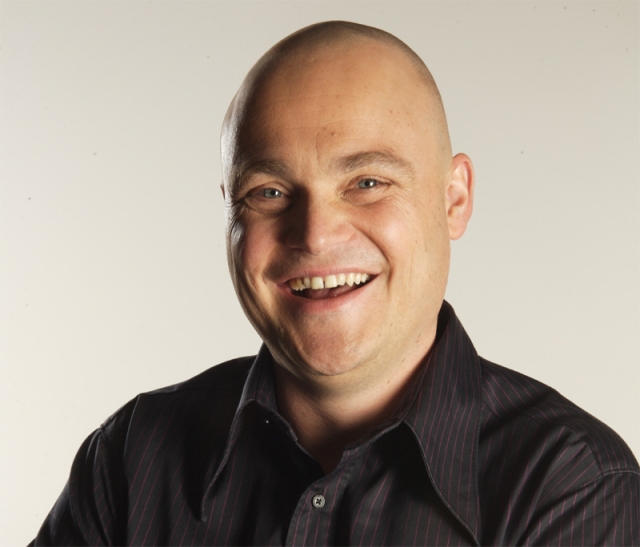Story Vault

StoryVault.Com goes live - a portal to the past for future generations
How often have you heard a person speaking and said "someone should record this before it's too late?" Fascinating memories from ordinary people which should not be allowed to be forgotten....
Now you can, thanks to the ‘public' launch (1st April 2010) of a new website Story Vault which enables anyone to do just that. StoryVault is an online video library that allows people to upload - and preserve for future generations - the remarkable stories and memories of friends and families. The site is set quickly to become an invaluable resource for students of history all around the world.
The site launches with over 250 diverse stories already saved for posterity. Celebrity followers include historian Dan Snow, comedian and Oxford History graduate Al Murray and clinical psychologist Professor Tanya Byron.
According to the site's creator - programme-maker Stuart Prebble, there are no limits to the sorts of stories that the site can capture: "StoryVault is for everyone because everyone has a story to tell. It could be Mum and Dad remembering their wedding day or someone recounting their personal experiences of an extraordinary event - like the Battle of Britain or the fall of the Berlin Wall. They may have been at a concert by The Beatles or lived through the Asian Tsunami. Most people have a story that would be of interest to future generations."
StoryVault encourages users to interview a friend or family member, usually on video, and to upload the content to the site. Content can either be marked as "private" so it's accessible only for chosen friends or family, or it can be made available publicly.
In his private life "the Pub Landlord" Al Murray is a graduate in Modern History. He believes that StoryVault.com will quickly become an invaluable and regular resource for students, families and historians. "Stories of personal experience bring history to life, and every historian loves to be able to access first-hand testimony from eye-witnesses."
"StoryVault is not only a great way to capture important memories from the family which should be kept for future generations, it's actually contributing to our understanding of how we came to be who we are today," concludes Al.

Where once family memories were put in a cupboard or attic and were often lost to future generations, StoryVault aims to ensure that they will remain available to future generations and the wider world. Professor Tanya Byron has led a Government study on use of the internet. "So many of us have had the experience of regretting that we've left it too late to ask important questions of the people we love. Part of what I love about StoryVault is that it gets different generations within the family talking to each other. And once these memories are recorded and uploaded, they are there forever. We once relied on archive photographs, film and TV footage to inform us of days gone past and events that shaped our future. Now we can create that footage ourselves and in so doing leave a gift for future generations - a historical digital archive that spans all ages, all races, all people for all time."
StoryVault also gives users the opportunity to store their memories as part of a family-tree. For instance clicking on the name or picture of "Grandma" will immediately take the user to a set of all the clips of interviews she has given. This can then be shared on a personalised family tree with other family members, so they can add their own content - effectively capturing all the family's important memories in one place. The structure of StoryVault's family tree can also be used as an organiser for other groups of people such as clubs, society-members or companies.
Historian Dan Snow used StoryVault for just that reason: "It was only when my grandfather got ill that I realised I hadn't asked him so many questions about his early life. So I recorded an interview with him and uploaded it on StoryVault. Now, even though he's passed away, those stories are available indefinitely for my family and the wider world."
For ease of uploading and future reference, users are advised to edit their content and to upload it in sections of no more than 10 minutes. The team suggests 4 or 5 minutes on any single subject is ideal. Instructions and advice on how to conduct an interview, the permissions needed and how to upload and organise material, are available on-screen and in the "how to" videos.
Examples of some of the content on the site at the moment, includes:
- Elizabeth Gladys "Millvina" Dean (born 2 February 1912) was, at age 97, the last living survivor of the sinking of the RMS Titanic that happened on 15 April 1912. She had only seen the Kate Winslet version of the film once - and was not that impressed! Elizabeth died last year but her memories are preserved for future generations on StoryVault
- Former boss of Phonogram Records Tony Powell tells how his world was turned upside down when Bob Geldof came into his office one day and said "we're going to make a charity record....."
- In 1966 Derek Cattani was working as an FA photographer and had already spent a lot of time taking photos of the England World Cup Squad training in the run-up to the finals tournament. He recalls hanging out with the team in training and early matches and playing tennis with Geoff Hurst
- Henry William Allingham was born 6 June 1896. He was 113 when he gave this interview and the oldest verified living man in the world. Allingham was the oldest ever surviving member of any of the British Armed Forces and the oldest surviving veteran of the First World War. He was also the last survivor of the Battle of Jutland of 1916. Here he describes his remaining memories of the Battle of Jutland. Henry sadly died last year.
- Roger Fuller was a 30 year old constable with the Metropolitan Police at the time of the riots. In this interview he talks about events of April 1981 - the Brixton Riots and how the police tried to handle the situation.
Attached files:
- Al_Murray_Biography.doc
36 KB Word document

